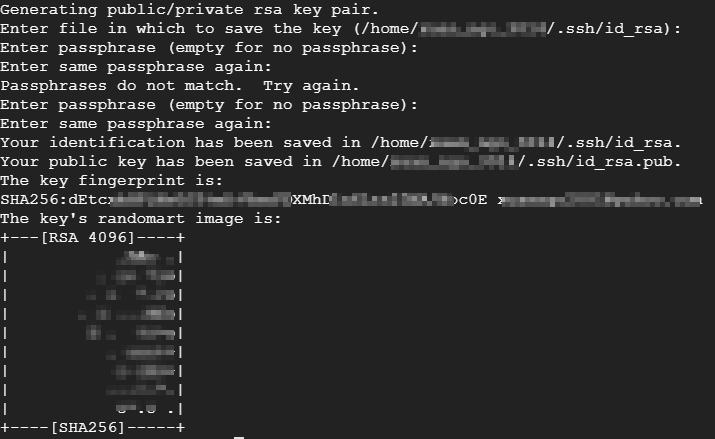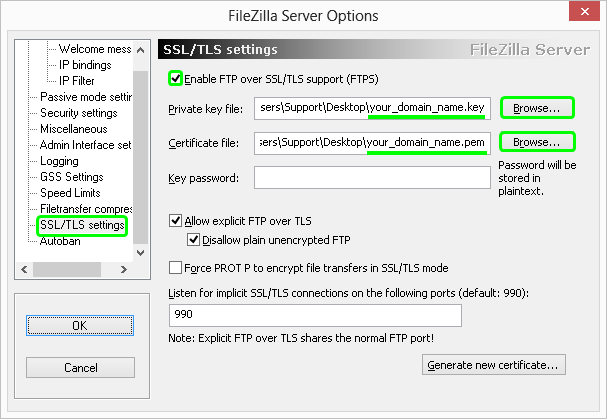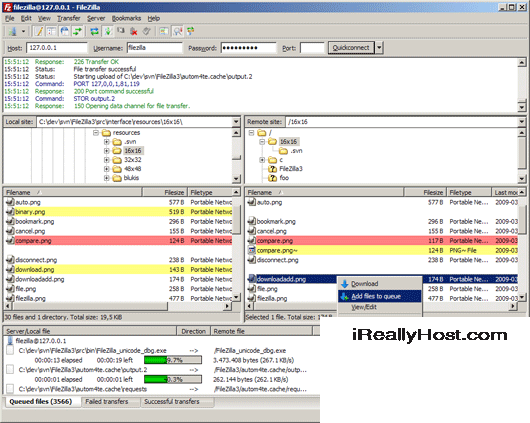
- Filezilla ssh create key example how to#
- Filezilla ssh create key example install#
- Filezilla ssh create key example mac#
– PuTTYgen Windows.Īlso, check out Remmina (supports RDP, SSH, VNC and more)įirst published: | Last updated: Jan 4th, 2023. Make sure you’ve replaced the “keyname” with your private key filename. Then cd to the path of key(s): puttygen keyname -o keyname.ppk
Filezilla ssh create key example install#
On Arch Linux its simple… pacman -S puttyĭebian/Ubuntu try… apt install putty-tools Then, it optionally makes modifications to the key (changing the comment and/or the passphrase) finally, it outputs the key, or some information about the key, to a file. Firstly, it either loads an existing key file (if you specified keyfile), or generates a new key (if you specified keytype).

The config file that you just created will be pulled when attempting to connect and will use the details you entered above.When you run puttygen, it does three things. Run the command ssh-keygen from the Terminal.app (macOS) or console (Windows) to generate a public/private pair of keys. Next, select SFTP-SSH File Transfer Protoco l from the Protocol drop-down menu. Add your particular hosting server as the host and type 22 as the port. Start by opening the FileZilla client and navigating to the Site manager. Select SFTP under Protocol, then type in the name of your shared server in the Server field. Step 1: Access the FileZilla site manager. Go back to edit your site within Coda, and go to the Server tab. Then save the file with CTRL-X and hit Y to confirm, then Enter. In it, add a new host record that looks like this:
Filezilla ssh create key example mac#
Go back to Terminal on your Mac and create a new ‘config’ file in the ‘.ssh’ directory if there is not already one there. Go back to the list of your keys and click Manage Authorization next to the key name you just imported, then click Authorize. If you want to quickly view the contents of these key files in Terminal, use these commands (assuming you named your key ‘inmotionhosting’):Ĭopy and paste the results of those commands into the private field (first one) and then the public field (second one) in cPanel. Type in your passphrase where it asks for it. Then copy and paste the contents of your private and public key files that you generated earlier in their respective boxes. Then click Import Key.Įnter the name that you gave your key in the relevant field. The idea is to set up your desktop/laptop. This is a technology based on public-key cryptography. Once that’s done, head over to Security -> SSH Shell Access in cPanel and click Manage SSH Keys. Setting Up your local hosts for password-less login via SSH.

Ssh-add -K inmotionhosting (but replace ‘inmotionhosting’ with whatever you name your key) Give it a unique name, like inmotionhosting and set your passphrase – just like you do through cPanel.Īfter generating the key, add it to your Keychain with: Click the Generate button to generate a new key. I was able to get this working in Coda 2, finally! I found that using the keys generated through cPanel was not possible in Coda, so I tried generating my own through Terminal like this: Using SSH keys with PuTTY Launch Puttygen from your start menu. You can use another FTP client to avoid this issue. FileZilla is noted for not supporting version 3 of the PPK file. Build 94 and older will use the older formats (version 1 and 2). The version that is converted will vary based on the cPanel version that you are using. Some FTP clients are unable to use the PuTTy_user-Key-File-3 version. Step 1: Access the FileZilla site manager Start by opening the FileZilla client and navigating to the Site manager. You will see it in the first line when you convert the key (as per the screenshot below). NOTE: If you have converted the key to PPK format using cPanel make sure to review the PuTTy-User-Key-File version that it has been converted to. Next, you need to create your connection profile.
Filezilla ssh create key example how to#
First, you need to attach your private key file to FileZilla. In this video you will learn how to configure FileZilla Pro Enterprise Server to authenticate SFTP users using Public Key Authentication.To learn more about. The next step is creating your SFTP profile in your FileZilla application.

If you already created keys for SSH access, you will use the same keys for SFTP. If you haven’t done this, you can find the instructions in the following article SSH access for Resellers and Shared Servers. The first step is creating your public and private keys. SFTP, different than FTP access, doesn’t use the normal cPanel login to access your account. Below is our guide on using FileZilla and connecting to SFTP for shared accounts. We recently added Secure FTP (SFTP) to our Shared plans.


 0 kommentar(er)
0 kommentar(er)
